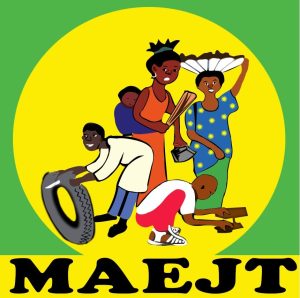How to the free voice of children and young people affected by economic exploitation and sexual violence and enable them to become key players in protection, in 28 African countries
A situation of economic and sexual exploitation that remains in place despite the intentions of the duty bearers….
Regardless of the type of violence suffered or the circumstances in which it happened, most victims keep it secret and never seek help.
Limited data show that, in some countries, boys are even less likely than girls to seek help. And, like girls, most boys do not talk about their experience of violence, regardless of its type, because they do not see it as a problem. Victims are much more likely to seek support from individuals they know personally than from institutions such as police services, medical centres, legal aid facilities, religious groups and/or social services, even when they know that they can find help there1.
Some figures for reminder
|
Economic exploitation
|
Sexual violence
|
|---|---|
|
More than one among five children in Africa are employed against their will in quarries, farms and mining open-pits.
|
The current available data reveals the prevalence rate by 10% and above among 13 of the 18 sub-Saharan African countries are involved in forced sexual intercourse
|
|
Percentage of children involved in hazardous work is high in the sub-Saharan African region (a rise to 10 per cent).
|
In West and Central Africa, at least 1 among 14 girls reported incidents of physical violence in the past year, 26% in Cameroon and 42% in the Democratic Republic of the Congo.
|
|
30% of children between the age of 5-17-year-olds in sub-Saharan Africa are involved in child labour
|
In Eastern and Southern Africa, nearly 50% of boys aged 15-19 believe that it is justified for a husband to hit his wife in certain contexts; in West and Central Africa, this proportion is slightly more than one-third.
|
Economic exploitation remains insufficiently documented, violence and in particular, sexual exploitation are very poorly documented: little or no statistical data, imprecise definitions, non-specific methodology, uncoded indicators.
It is very difficult to accurately assess the importance of the sexual exploitation of children in all countries and particularly in African countries:
- The subject remains taboo in many countries, in all circles, in all institutions/organizations: whether local, national or international, despite their speeches, policies and procedures.
- Non-harmonization and multiplicity concepts related to sexual violence: outrage, indecent assault, rape, rape with defilement, rape with violence, incest, prostitution, debauchery, incitement to prostitution, incitement to debauchery, homosexuality, sexual abuse, sexual violence, sexual harassment, acts against nature, pedophilia.
- The absence of national studies based on rigorous methodology and codified standards.
The official data collected by the police and the judiciary reflect only part of the reality because they are based exclusively on the cases presented to them. The typical differences in sexual violence and favourable situations to which children and young people are exposed are also:
- Domestic violence and sexual abuse
- Female genital mutilation
- Child pornography and sex tourism
- Child trafficking and exploitation of children and young people
- The recruitment of child soldiers
The lack of reliable statistics on acts of sexual exploitation and abuse and the factors associated with them are obstacles to the development, implementation and evaluation of effective responses to violence, with decision-makers and funding partners often invoking this argument as a reason for not funding the interventions proposed by response actors. For the reasons mentioned above, policies aimed at the prevention, protection and rehabilitation of sexually abused children are still in their embryonic stages.
- Little value is given to the child’s and young person’s speech
- Awareness campaigns are rare
- The mobilization of the private sector in the fight against exploitation is not yet well structured
- The degree of harmonization of national legislation with the UNCRC, as well as the mechanisms for monitoring the implementation of the UNCRC, varies.
- The penal codes of the 27 countries punish all forms of abuse and exploitation, but their applicability remain optional,
- Access to police and justice services remains difficult for children, who in some countries must be accompanied by their parents or guardians: this hinders the intervention of professionals in the field of children and social workers.
- The regional socio-cultural context and the stigmatization of child victims of sexual exploitation, particularly girls, severely hamper social reintegration.
- The application of the principle of extraterritoriality, stipulating that the State’s jurisdiction extends to criminal acts, including sexual offences, committed by their nationals abroad, does not seem to be applied, for the time being.
Poverty, unemployment, poor basic social services (health, education, housing, etc.), reduced economic growth, economic exploitation of children, armed conflict, are all factors that lead to the exclusion of vulnerable populations, such as children and young people.
The powerful strengths of AMWCY in addressing the challenges of economic and sexual exploitation with children and young people.


